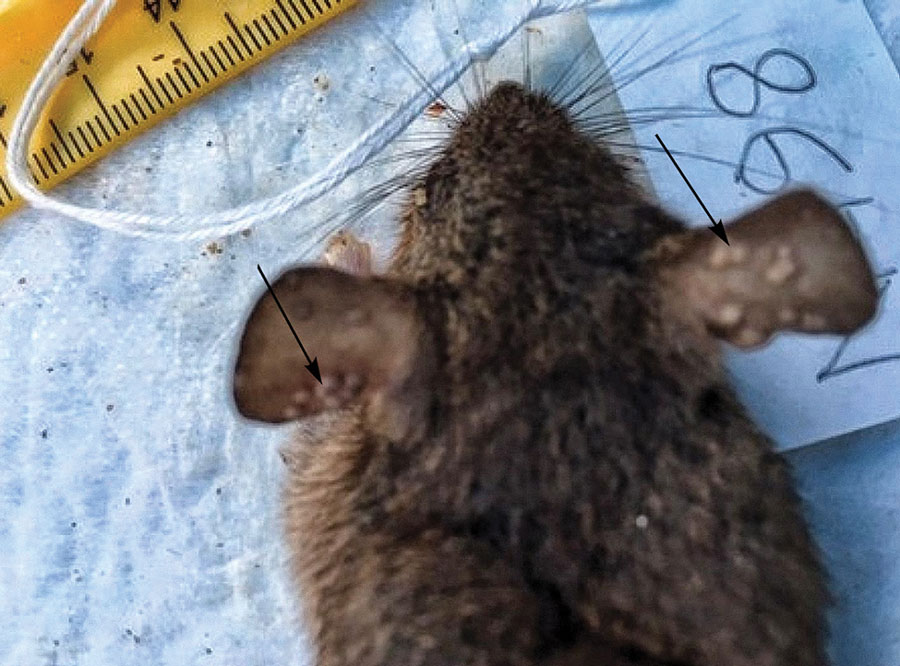Volume 29, Number 2—February 2023
Research Letter
Orthopoxvirus Infections in Rodents, Nigeria, 2018–2019
Figure

Figure. Rodent N198 with poxlike lesions (arrows) in the ears but negative for orthopoxvirus by quantitative PCR and ELISA, sampled in study of orthopoxvirus infections in rodents, Nigeria, 2018–2019.
Page created: December 20, 2022
Page updated: January 21, 2023
Page reviewed: January 21, 2023
The conclusions, findings, and opinions expressed by authors contributing to this journal do not necessarily reflect the official position of the U.S. Department of Health and Human Services, the Public Health Service, the Centers for Disease Control and Prevention, or the authors' affiliated institutions. Use of trade names is for identification only and does not imply endorsement by any of the groups named above.